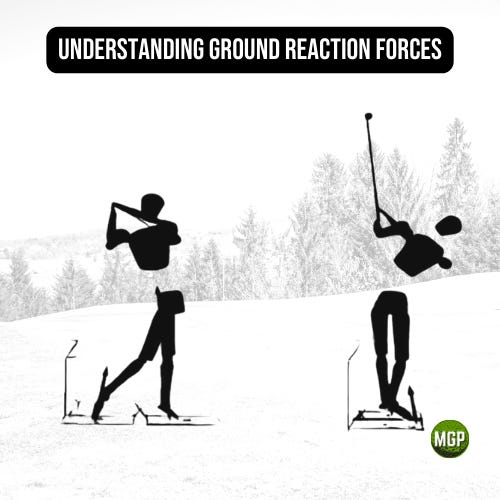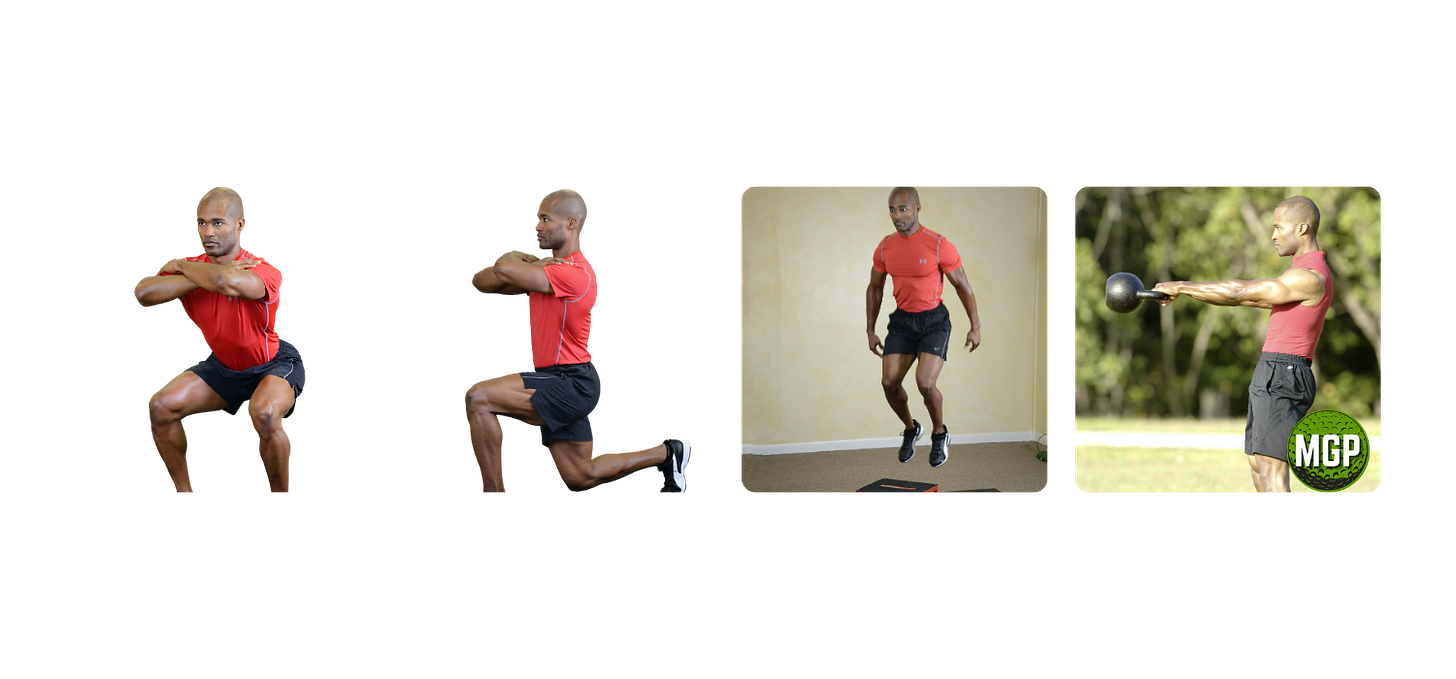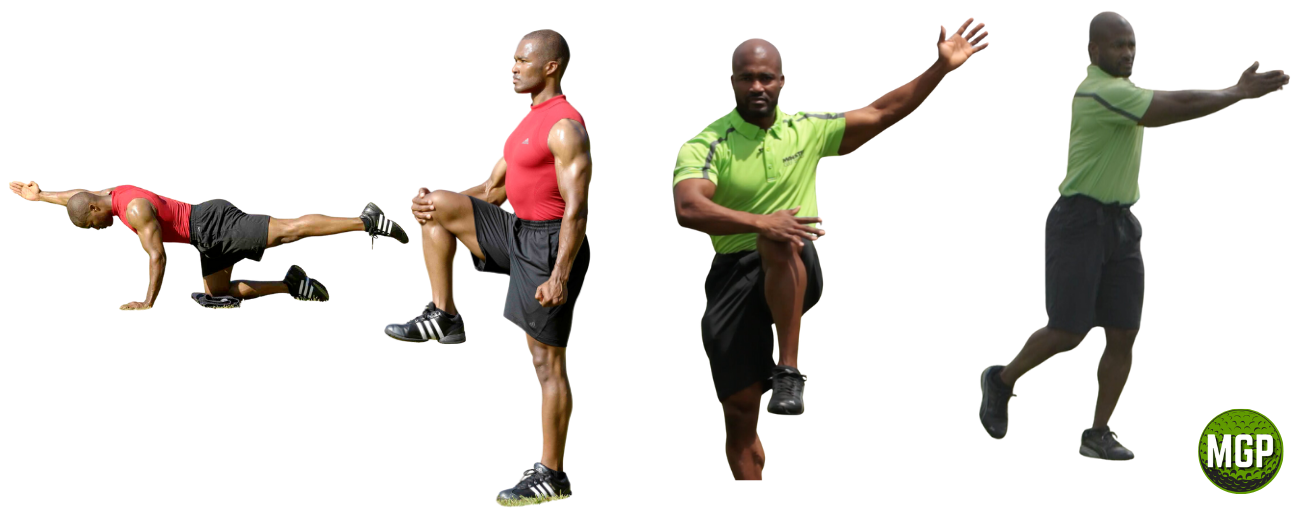Next Level Swing Speed! Discover The Power Of Ground Reaction Force
This article explores the science behind GRF, its impact on swing speed, and practical ways golfers can harness this force to revolutionize their game.

Golf has always been a game that blends finesse, strategy, and power. Historically, golfers have focused on swing mechanics, grip, and mental acuity to improve their performance. Recently, a new trend has emerged that emphasizes the role of ground reaction force (GRF) in enhancing golf swing speed. This article explores the science behind GRF, its impact on swing speed, and practical ways golfers can harness this force to revolutionize their game.
Understanding Ground Reaction Force

Ground reaction force is the force exerted by the ground on a body in contact with it. According to Newton's third law of motion, for every action, there is an equal and opposite reaction. When a golfer makes a swing, their body exerts force on the ground, and the ground pushes back with equal force. This interaction is what we refer to as GRF.
In the context of golf, GRF plays a critical role in generating power during the golf swing. It helps in transferring energy from the lower body to the upper body, which is crucial for maximizing swing speed. By optimizing GRF in the body, you can achieve a more powerful and efficient golf swing.
The Science Behind GRF and Swing Speed
To understand how GRF impacts swing speed, we need to understand the biomechanics of the golf swing. A golf swing is a complex, multi-segment movement that involves the coordinated action of various body parts. The swing can be broken down into several phases: the setup, backswing, downswing, impact, and follow-through. Each phase involves different muscles and joints working together to produce a fluid and powerful motion.
The Role of GRF in Each Swing Phase
1. Setup: The setup phase is where the golfer positions themselves before the swing. Proper alignment and balance are crucial here, as they set the stage for effective GRF utilization. A stable base allows for better force generation during the swing.
2. Backswing: During the backswing, the golfer shifts their weight to the back foot. This weight transfer is essential for storing potential energy, which will be unleashed during the downswing. The backswing also involves a coiling of the upper body, creating tension that will contribute to swing speed.
3. Downswing: The downswing is where GRF comes into play most significantly. As the golfer begins the downswing, they push off the ground with their back foot, creating a force that travels through the body. This force helps in accelerating the clubhead, leading to greater swing speed. The transfer of weight from the back foot to the front foot is a critical aspect of this phase.
4. Impact: At impact, the golfer's front foot should be firmly planted, and the force generated from the ground helps in stabilizing the body and maximizing the transfer of energy to the ball. A strong GRF at impact ensures that the swing is powerful and efficient.
5. Follow-Through: The follow-through phase is where the golfer decelerates after striking the ball. While GRF is less critical in this phase, a balanced follow-through indicates that the golfer has efficiently utilized GRF during the swing.
Research on GRF and Swing Speed
Recent studies have shown a strong correlation between GRF and swing speed. Researchers have used force plates to measure the amount of force exerted by golfers during their swings. These studies have found that golfers who can generate higher GRF tend to have faster swing speeds and hit the ball farther.
One study published in the Journal of Sports Sciences found that professional golfers generate significantly higher GRF compared to amateur golfers. This difference in GRF contributes to the higher swing speeds observed in professional players. The study also highlighted that optimizing GRF can lead to improvements in swing mechanics, overall power, and consistency.
Practical Applications: Harnessing GRF to Improve Swing Speed
Understanding the importance of GRF is one thing, but applying this knowledge to improve swing speed is another. Here are practical ways golfers can harness GRF to enhance their performance:
1. Proper Footwork and Weight Transfer
Effective footwork and weight transfer are essential for maximizing GRF. During the backswing, focus on shifting your weight to the back foot while maintaining balance. As you transition to the downswing, push off the ground with your back foot, driving the force through your legs and into your upper body.
Drill: The Step-Change Drill is an excellent way to practice weight transfer. Start with your feet together, then step back with your lead foot during the backswing and forward with your trail foot during the downswing. This exaggerated movement helps in feeling the weight transfer and force generation.
PGA Instructor Trevor Salzman recently posted a great lesson on this very skill. To get a free cheatsheet of the lesson, click here.
2. Strengthening Lower Body Muscles
Strong lower body muscles are crucial for generating GRF. Exercises that target the legs, hips, and core can enhance your ability to produce and utilize force. Tiger Woods believes leg strength and endurance is critical to creating and sustaining power in the golf swing.
Exercise: Squats, lunges, and deadlifts are effective exercises for building lower body strength. Additionally, plyometric exercises like box jumps, jump squats, speed squats, or kettlebell swings can improve explosive power, which is vital for generating GRF.

3. Improving Balance and Stability
Balance and stability are fundamental for effective GRF utilization. A stable base allows for better force generation and transfer during the swing.
Drill: The Single-Leg Balance Drill helps improve balance and stability. Stand on one leg and perform mini squats or practice your swing. This drill challenges your balance and strengthens the stabilizing muscles in your legs and core.
4. Utilizing Ground Force Plates
For golfers who want to take their training to the next level, using ground force plates can provide valuable feedback on GRF. These devices measure the amount and direction of force exerted by each foot during the swing. Analyzing this data can help identify areas for improvement and optimize force generation.
Application: Many high-end golf training facilities and academies offer access to ground force plates. Working with a coach who understands how to interpret and apply this data can lead to significant improvements in swing speed and overall performance.
5. Focusing on Proper Sequencing
Proper sequencing of the golf swing ensures that the GRF generated is efficiently transferred through the body. This involves coordinating the movements of the lower body, torso, and arms in a specific order.
Drill: The Pump Drill can help improve sequencing. Perform a half-swing, stopping at the top of the backswing. Then, make several small “pumps” or partial downswings before completing the full swing. This drill reinforces the proper sequence of movements and helps in timing the use of GRF.
6. Engaging the Core
The core plays a vital role in transferring GRF from the lower body to the upper body. A strong and stable core allows for better control and power during the swing.
Exercise: Planks, Russian twists, and medicine ball throws are effective exercises for strengthening the core. These exercises enhance the ability to generate and transfer force, contributing to greater swing speed.
7. Mental Focus and Visualization
Mental focus and visualization techniques can also aid in harnessing GRF. Visualizing the force traveling from the ground through your body and into the club can enhance your awareness and execution during the swing.
Technique: Before each swing, take a moment to visualize the process of generating GRF. Picture the force starting from your feet, moving up through your legs and core, and finally reaching the clubhead. This mental rehearsal can improve your ability to utilize GRF effectively.
The trend of emphasizing ground reaction force in golf is revolutionizing how players approach their swings. By understanding and harnessing GRF, golfers can achieve significant improvements in swing speed, distance, and overall performance. Whether you’re a professional looking to gain a competitive edge or an amateur seeking to enhance your game, integrating the principles of GRF into your training can lead to remarkable results. Embrace this trend, and watch your golf game reach new heights. ###
Fun Fact:
Back in 2006 I released a book called HardStyle Golf Conditioning. It was the first book to incorporate the use of the kettlebell to build power in the golf swing. The kettlebells are tried and proven in their ability to quickly and safely increase GRF. To learn how to get a free copy of my book HardStyle Golf Conditioning, click here.






